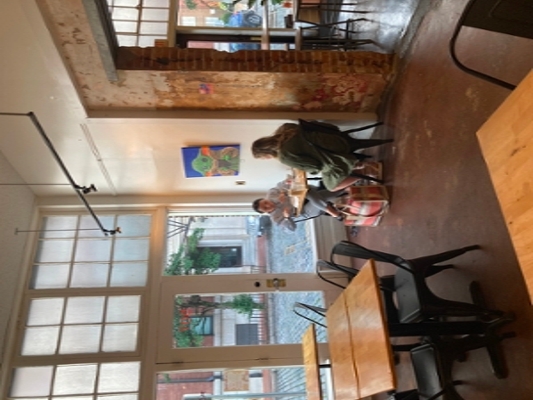Researching Children's Rights NGOs

Because I have a day job, my work for the Beijing Legal Children’s Aid & Research Center (BCLARC) often happens in a Norfolk coffee shop in the early morning. Like settling in to a neighborhood or a city in a foreign country, settling in in Norfolk has its challenges. If anyone knows of a good bakery that opens no later than 7 o’clock, please loop me in. In the meantime, I’ve found a few coffee roasters to keep me happy. The one above is on a cobblestone dead-end street, which gives the feel of a far-away quiet place.
This week I started my first research assignment, looking for and documenting other global organizations that protect children’s rights. Many of the NGOs focus on some aspects of the United Nation Convention on the Rights of the Child (the Convention), an international treaty that lists and recognizes rights of children as special, more protective, versions of human rights. The treaty establishes international law to ensure that children have (among other things) education, health care, and protection against military service and capital punishment. The treaty makes it illegal to exploit children—sexually, economically through enforced labor or trafficking, or by using them in armed conflict. I found a simple summary of the articles of the Convention generated by UNICEF.
I explored four avenues of children’s rights protection: the digital domain, funding organizations, direct legal support, and advocacy.
For my first assignment, I mainly used google, rather than legal research tools, which made for a nice break from the legalese of WestLaw. Many of the organizations that I found also focus on using the internet—working on digital aspects of protecting children. There are several NGOs that focus on developing digital tools (read: software and data access) for monitoring compliance with children’s rights treaties. These companies examine principally government actions, but several of them examine corporate behavior. Other NGOs are working to develop online hubs for collaborations among NGOs, enabling sharing data and research.
Little gets done on a grand scale without fundraising. Many of the NGOs focus on raising and distributing funding for work in children’s issues. I found organizations that form networks of financiers and philanthropic consultants who finance children’s rights projects. Organizations that I reported on include the Elevate Children Funders’ Group, Terre des Hommes, and Alana.
There are many organizations that provide free legal advice, representation and social support for children—the so-called boots-on-the-ground work. Because the laws of each country are unique, despite the unifying Convention, pro bono legal assistance generally comes from lawyers trained within each country. Religious-based organizations are among the groups, principally working though families and communities and addressing poverty as a root cause of injustice. The Convention also advocates incorporating children’s perspectives, listening to how a child wants a situation handled. This prong of the Convention spurs NGOs to provide training to professions working with children such that they not only work to protect children but to also to address responsibility and collaboration with children.
The final category or work being done by NGOs deals with gathering information and transforming that information into conclusions, lessons learned and advocacy efforts. Field work done by NGOs includes interacting with local people in different countries to determine how to make an impact. Many NGOs that specialize in some of the above-mentioned areas also have projects in public policy and advocacy, publishing proposals and reports on children’s rights, including by country and region. Several NGOs study other NGOs in order to discern good practices and then to adapt those practices to apply in other cultures and environments and to scale to nd recognizing good practices and scaling those practices.
My report and sources delivered, I turn to my next assignment.